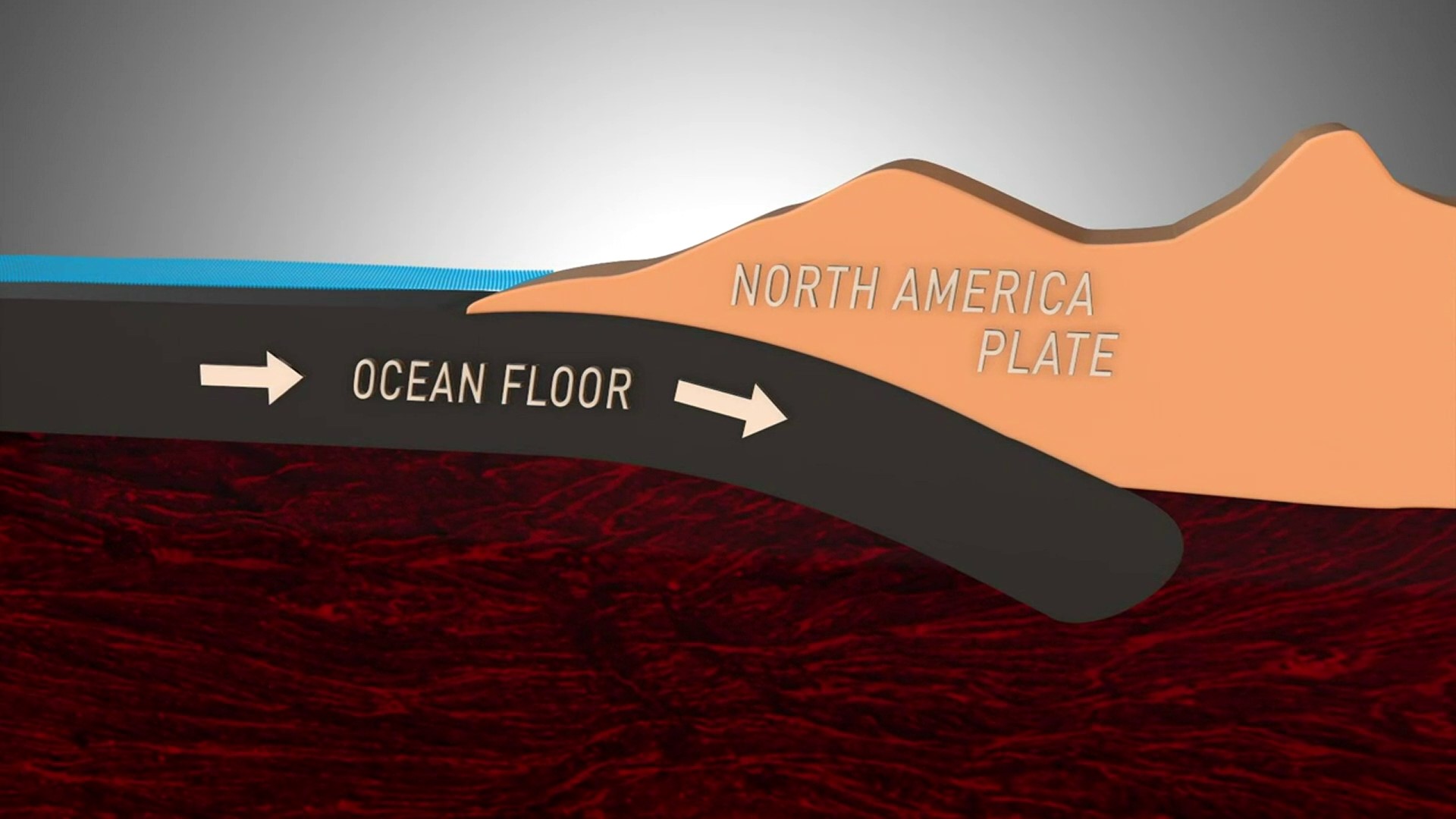The great Cascadia earthquake’s being called the worst natural disaster to hit North America, and it hasn’t happened yet.
Geologists say it’s coming; it’s just a matter of when.
“The Big One” will involve three states and one Canadian province. A giant fault known as the Cascadia Subduction Zone starts off Cape Mendocino, Calif., where the famed San Andreas Fault heads west into the ocean. It runs off the coast of northern California, Oregon, and Washington and ends north of Vancouver Island, Canada. Seismologists are expecting a magnitude 9.1 earthquake that could last five minutes or longer.
In June 2016, the Washington Military Department, which includes the National Guard and the state Emergency Management Division, executed a four-day exercise called Cascadia Rising based on a disaster scenario from the Federal Emergency Management Agency with sobering results.
In the FEMA estimate, Washington state would suffer 8,440 fatalities and 12,114 injuries in the initial earthquake and tsunami, but that “does not account for exposure, disease, dehydration, starvation, or follow on tsunami’s and aftershocks,” the National Guard noted in a presentation to the media and officials before the exercise.
In planning for the future, the National Guard was prepared to deal with 1,274,327 people needing mass feeding and water, 507,701 damaged homes and residential buildings, and 410,127 people needing emergency shelter. It even accounted for 254,357 pets requiring shelter.
Related: State's action report after drill
The preview to what Washington faces was seen in extensive video of the shaking and tsunami in the March 2011 Tohoku earthquake in Japan. It was a country much more prepared, but not prepared enough, especially from the effects of the tsunami, which is blamed for most of the nearly 16,000 deaths.
The 2011 Japanese quake is significant, because it leaves the Pacific Northwest as the only major subduction zone around the Pacific Ocean’s “Ring of Fire” to have not seen a major earthquake in the last half century. The subduction fault of the Tohoku quake had remained quiet for more than 800 years before 2011.
The last time the Cascadia Subduction Zone went off was January 26, 1700.
Cascadia Rising was designed to find out what works and what doesn’t, and the biggest reveal was that individuals need to be prepared to be on their own much longer than what had been the conventional wisdom of three days.
“We are recommending that they have two weeks of preparedness for their families,” said General Chris Fowler.
Part of the problem says Fowler, who is also a Seattle Police captain, is that many first responders will also be hit hard by any earthquake.
“Many of the first responders within that 24- to 72-hour period are just like you are. They’re trying to manage their families. They’re trying to stabilize their houses, and they’re trying to understand what their resources are, and from there they’re trying to change into the first responder sort of job,” Fowler said.
In the meantime, resources will be mobilized outside of the region and begin traveling from other states. That too will take time. It would take 72 hours to get supplies ready to go where they needed in an organized way, according to Fowler.
Cascadia Rising involved some 23,000 military and civilian personnel. The Navy and the U.S. Army brought in everything from the supply ship Bob Hope it stationed off Indian Island to landing craft to bring supplies ashore, because docks and wharves will likely be damaged or destroyed. Crews also set a giant portable fuel depot complete with giant bags and pipe to run miles inland.
Something as simple and routine as getting gas and diesel is expected to be tough. Power will be out to run gas pumps, and refilling underground supply tanks will be difficult with damaged roads. That fuel will initially be needed first by police, fire departments, and other first responders.
The fuel situation is just one example of just how overwhelming this coming earthquake threatens to become.
“It just became very crystal clear to us that in a catastrophic event it is vastly different than disasters were normally experience – the flooding, the wildland fires, or even the Nisqually type of earthquake,” said Robert Ezelle, director of the state’s Emergency Management Division. “The infrastructure was still largely there following those types of events. After a catastrophic event the infrastructure is going to be severely degraded if not inoperative. “
Related: Cascadia Rising after action report
“I think what worked was the collaboration between the various stakeholders and partners,” said Ezelle. “…the collaboration with our federal partners down to our local and tribal partners who were playing in the exercise.”
Ezelle says it’s not a matter of if but when. The big one will come.
“Long term what we’re looking to build here in Western Washington is that sense of self-reliance that the government isn’t going to be here to help immediately,” Ezelle said. “We have to be prepared to take care of ourselves for a period of time.”
Join KING 5’s Disaster Preparedness Facebook group and learn how you and your community can get ready for when disaster strikes.



